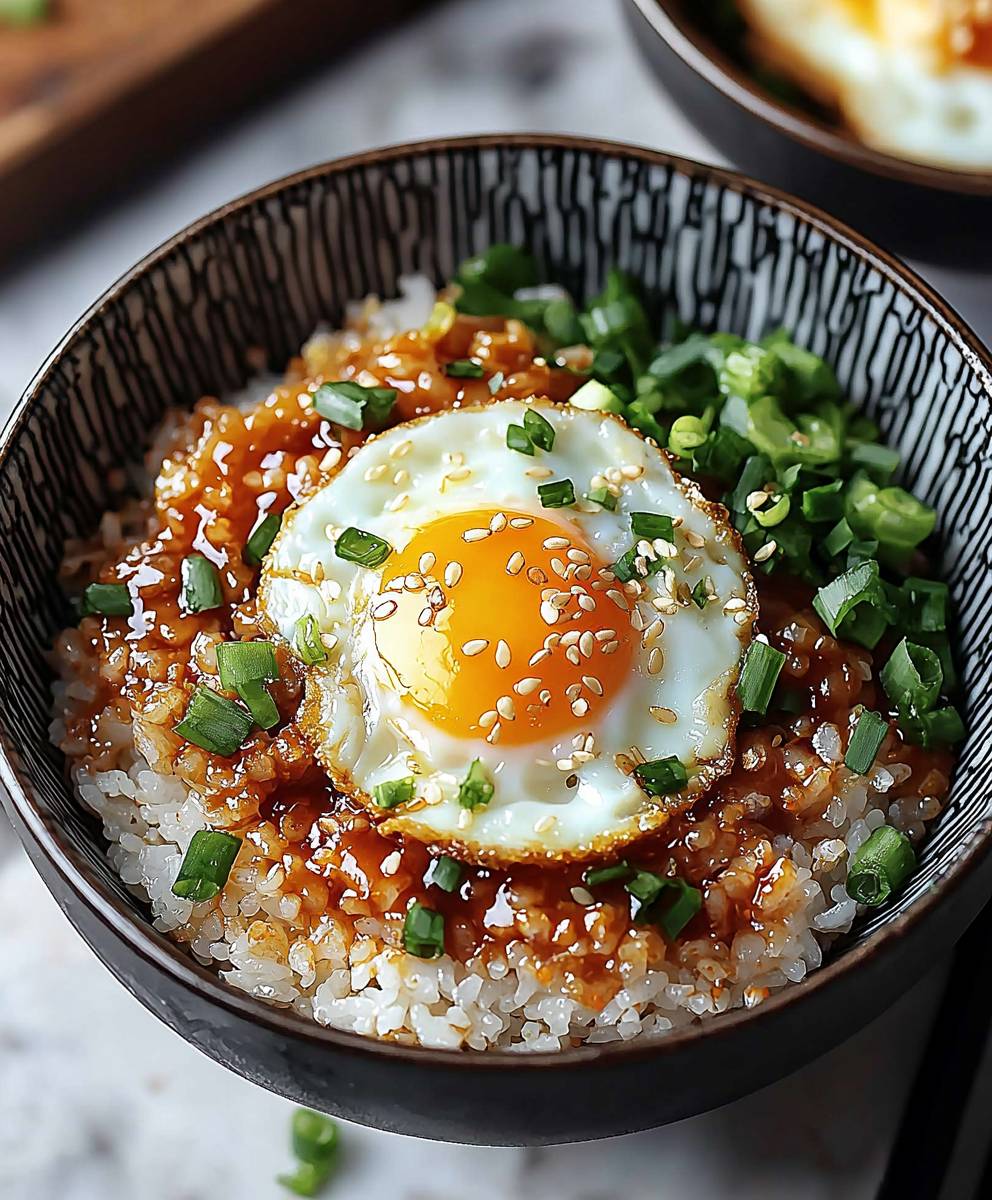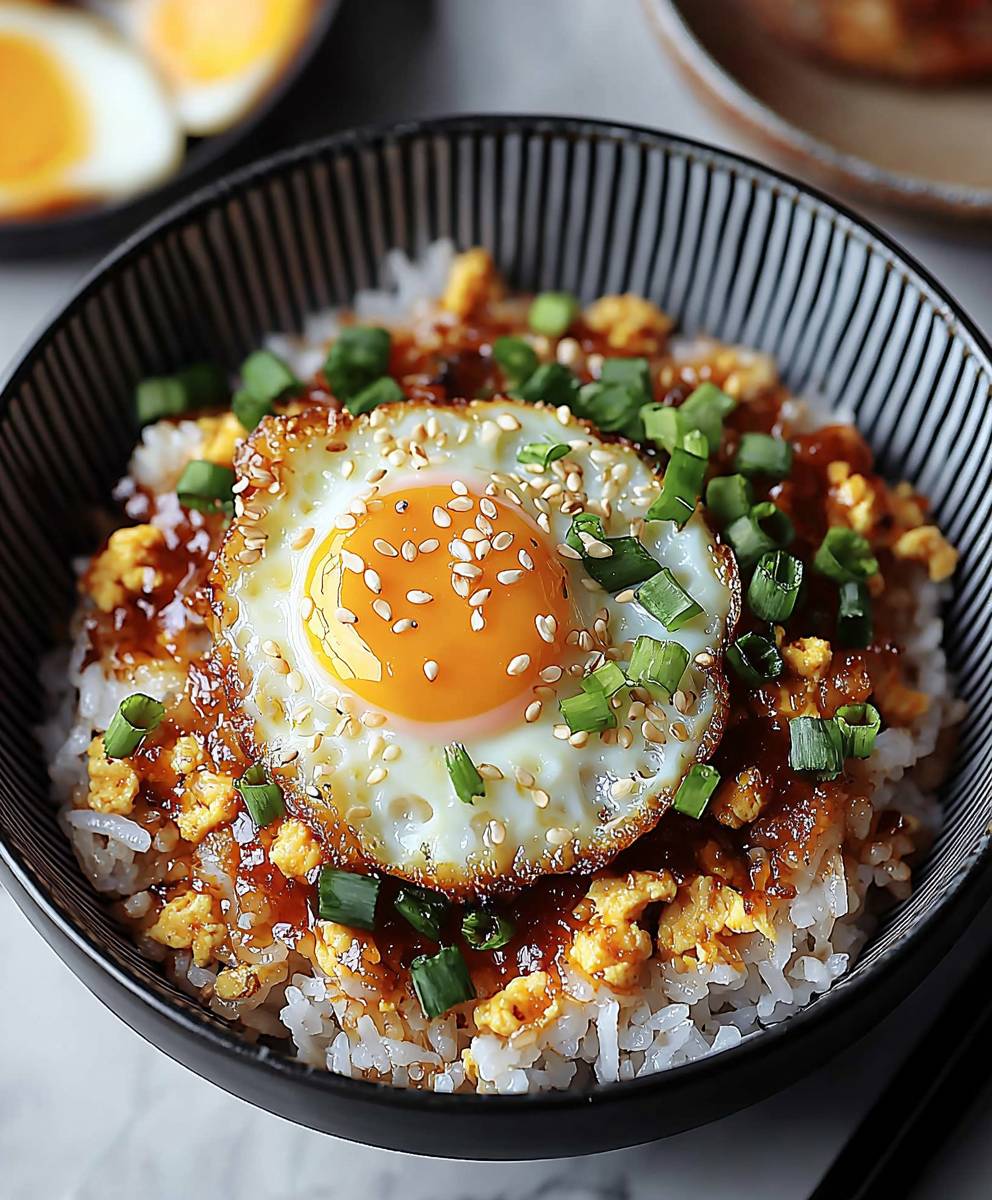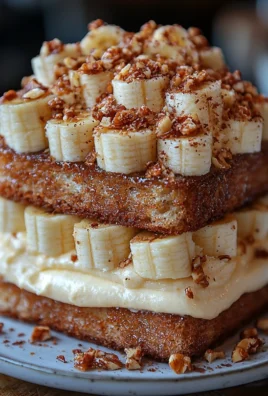Korean Egg Rice, or Gyeran Bap, is more than just a quick meal; it’s a warm hug in a bowl, a comforting taste of home, and a testament to the beauty of simple ingredients. Have you ever craved something satisfying but didn’t want to spend hours in the kitchen? This is your answer! This humble dish, often enjoyed for breakfast, lunch, or a late-night snack, is a staple in Korean households, passed down through generations.
While its exact origins are shrouded in the mists of time, Korean Egg Rice likely emerged as a resourceful way to utilize leftover rice and readily available eggs. It speaks to the Korean spirit of making the most of what you have, transforming basic components into something truly delicious. What makes Gyeran Bap so universally loved? It’s the perfect harmony of textures: fluffy rice, creamy egg, savory soy sauce, and the nutty crunch of sesame oil. The umami-rich flavor profile is incredibly addictive, and the entire dish comes together in under 10 minutes. It’s a lifesaver on busy weeknights and a delightful treat any time you need a little comfort food. So, let’s dive in and learn how to make this incredibly easy and satisfying Korean classic!
Ingredients:
- For the Rice:
- 2 cups cooked short-grain rice, preferably day-old and slightly cooled
- 1 tablespoon sesame oil
- 1/2 teaspoon salt
- 1/4 teaspoon ground white pepper
- For the Eggs:
- 4 large eggs
- 1 tablespoon milk or water
- 1/4 teaspoon salt
- 1/8 teaspoon ground black pepper
- 1 tablespoon vegetable oil
- For the Vegetables (Optional):
- 1/2 cup finely chopped carrot
- 1/4 cup finely chopped onion
- 1/4 cup finely chopped green bell pepper
- 1/4 cup finely chopped zucchini
- For the Sauce:
- 2 tablespoons soy sauce
- 1 tablespoon sesame oil
- 1 tablespoon rice vinegar
- 1 teaspoon sugar
- 1/2 teaspoon gochugaru (Korean chili flakes), adjust to taste
- 1/2 teaspoon minced garlic
- 1/4 teaspoon sesame seeds
- For Garnish (Optional):
- Sesame seeds
- Chopped green onions
- Kimchi, for serving
- Roasted seaweed flakes (gim)
Preparing the Rice:
- Fluff the Rice: Gently fluff the cooked rice with a fork to separate the grains. This is important, especially if you’re using day-old rice, as it tends to clump together.
- Season the Rice: In a large bowl, combine the fluffed rice with sesame oil, salt, and white pepper. Mix well to ensure the rice is evenly seasoned. The sesame oil adds a nutty aroma and flavor, while the salt and pepper enhance the overall taste.
- Set Aside: Cover the seasoned rice with a damp paper towel or plastic wrap to prevent it from drying out while you prepare the other components.
Preparing the Eggs:
- Whisk the Eggs: In a medium bowl, crack the eggs. Add milk or water, salt, and black pepper. Whisk vigorously until the eggs are light and frothy. The milk or water helps to create a softer, more tender egg texture.
- Cook the Eggs: Heat vegetable oil in a non-stick skillet over medium heat. Make sure the pan is hot before adding the eggs.
- Scramble the Eggs: Pour the egg mixture into the hot skillet. Let it cook for a few seconds until a thin layer of cooked egg forms at the bottom. Then, using a spatula, gently push the cooked egg towards the center of the pan, allowing the uncooked egg to flow underneath. Continue this process until the eggs are mostly cooked but still slightly moist. You want them to be soft and fluffy, not dry and rubbery.
- Remove from Heat: Once the eggs are cooked to your liking, remove the skillet from the heat. The residual heat will continue to cook the eggs slightly.
- Chop the Eggs: Using your spatula, roughly chop the scrambled eggs into bite-sized pieces. This makes it easier to mix them with the rice later.
Preparing the Vegetables (Optional):
- Prepare the Vegetables: If you’re using vegetables, wash and finely chop them into small, uniform pieces. The smaller the pieces, the quicker they will cook and the better they will blend with the rice and eggs.
- Sauté the Vegetables: Heat a small amount of vegetable oil in a separate skillet or wok over medium heat. Add the chopped vegetables and sauté until they are tender-crisp. Avoid overcooking them; you want them to retain some of their texture and color.
- Season the Vegetables: Lightly season the sautéed vegetables with a pinch of salt and pepper. You can also add a dash of soy sauce for extra flavor.
- Set Aside: Remove the vegetables from the skillet and set them aside.
Making the Sauce:
- Combine the Ingredients: In a small bowl, whisk together soy sauce, sesame oil, rice vinegar, sugar, gochugaru (Korean chili flakes), minced garlic, and sesame seeds.
- Adjust to Taste: Taste the sauce and adjust the ingredients to your liking. If you prefer a sweeter sauce, add more sugar. For a spicier sauce, add more gochugaru. If you want a tangier sauce, add more rice vinegar.
- Set Aside: Set the sauce aside until you’re ready to assemble the dish.
Assembling the Korean Egg Rice:
- Combine Rice and Eggs: In the bowl with the seasoned rice, add the scrambled eggs and the sautéed vegetables (if using). Gently mix everything together until well combined. Be careful not to overmix, as this can make the rice mushy.
- Serve: Divide the rice mixture into individual serving bowls.
- Drizzle with Sauce: Drizzle the prepared sauce over each serving of rice. The amount of sauce you use is up to you, so adjust it to your taste.
- Garnish (Optional): Garnish with sesame seeds, chopped green onions, kimchi, and roasted seaweed flakes (gim), if desired. These garnishes add extra flavor, texture, and visual appeal to the dish.
- Serve Immediately: Serve the Korean egg rice immediately while it’s still warm. Enjoy!

Conclusion:
So, there you have it! This Korean egg rice recipe is more than just a quick meal; it’s a flavor explosion in a bowl, a comforting hug on a plate, and a testament to the magic that happens when simple ingredients come together in perfect harmony. I truly believe this is a must-try dish for anyone looking for a delicious, easy, and satisfying meal.
Why is this Korean egg rice a must-try? Because it’s incredibly versatile! It’s perfect for a busy weeknight dinner when you’re short on time but still crave something flavorful and fulfilling. It’s also a fantastic option for a lazy weekend brunch when you want something a little more exciting than your usual toast and eggs. And let’s be honest, who can resist the allure of a perfectly cooked, runny egg mingling with savory rice and a touch of spice? The umami from the soy sauce, the subtle sweetness from the sesame oil, and the gentle kick from the gochugaru create a symphony of flavors that will tantalize your taste buds and leave you wanting more.
But the best part? It’s endlessly customizable! Feel free to experiment with different toppings and variations to make it your own.
Serving Suggestions and Variations:
* Spice it up! If you’re a fan of heat, add a dollop of gochujang (Korean chili paste) for an extra fiery kick. A drizzle of sriracha also works wonders.
* Add some protein! Grilled chicken, thinly sliced beef, or even crumbled tofu would be fantastic additions. You could also add some canned tuna for a quick and easy protein boost.
* Veggie power! Sautéed spinach, bean sprouts, or mushrooms would add a healthy and delicious touch. Kimchi is also a classic and flavorful addition.
* Make it cheesy! A sprinkle of shredded mozzarella or cheddar cheese would add a creamy and comforting element.
* Go gourmet! Top it with some avocado slices, a sprinkle of furikake (Japanese seaweed seasoning), or even a drizzle of truffle oil for a more sophisticated flavor profile.
* Egg-cellent options! While I love a fried egg with a runny yolk, you can also try a soft-boiled egg or even scrambled eggs. The choice is yours!
* Rice, rice baby! While white rice is traditional, you can also use brown rice, quinoa, or even cauliflower rice for a healthier option.
I’ve made this Korean egg rice countless times, and each time it’s a little different, depending on what I have on hand and what I’m in the mood for. That’s the beauty of this recipe it’s a blank canvas for your culinary creativity!
So, what are you waiting for? Head to your kitchen, gather your ingredients, and get ready to experience the deliciousness of Korean egg rice. I promise you won’t be disappointed.
And most importantly, I want to hear about your experience! Did you try the recipe? What variations did you make? What did you think? Share your photos and comments in the section below. I can’t wait to see what you create! Happy cooking!
Korean Egg Rice: A Delicious & Easy Recipe You'll Love
Quick and easy Korean Egg Rice (Gyeran Bap) fluffy seasoned rice topped with soft scrambled eggs, optional vegetables, and a flavorful sauce. A comforting and customizable meal ready in minutes!
Ingredients
- 2 cups cooked short-grain rice, preferably day-old and slightly cooled
- 1 tablespoon sesame oil
- 1/2 teaspoon salt
- 1/4 teaspoon ground white pepper
- 4 large eggs
- 1 tablespoon milk or water
- 1/4 teaspoon salt
- 1/8 teaspoon ground black pepper
- 1 tablespoon vegetable oil
- 1/2 cup finely chopped carrot
- 1/4 cup finely chopped onion
- 1/4 cup finely chopped green bell pepper
- 1/4 cup finely chopped zucchini
- 2 tablespoons soy sauce
- 1 tablespoon sesame oil
- 1 tablespoon rice vinegar
- 1 teaspoon sugar
- 1/2 teaspoon gochugaru (Korean chili flakes), adjust to taste
- 1/2 teaspoon minced garlic
- 1/4 teaspoon sesame seeds
- Sesame seeds
- Chopped green onions
- Kimchi, for serving
- Roasted seaweed flakes (gim)
Instructions
- Prepare the Rice: Gently fluff the cooked rice with a fork to separate the grains. In a large bowl, combine the fluffed rice with sesame oil, salt, and white pepper. Mix well. Cover with a damp paper towel or plastic wrap.
- Prepare the Eggs: In a medium bowl, crack the eggs. Add milk or water, salt, and black pepper. Whisk vigorously until light and frothy.
- Cook the Eggs: Heat vegetable oil in a non-stick skillet over medium heat. Pour the egg mixture into the hot skillet. Let it cook for a few seconds until a thin layer of cooked egg forms at the bottom. Then, using a spatula, gently push the cooked egg towards the center of the pan, allowing the uncooked egg to flow underneath. Continue this process until the eggs are mostly cooked but still slightly moist.
- Chop the Eggs: Remove from heat. Using your spatula, roughly chop the scrambled eggs into bite-sized pieces.
- Prepare the Vegetables (Optional): Wash and finely chop the vegetables into small, uniform pieces.
- Sauté the Vegetables (Optional): Heat a small amount of vegetable oil in a separate skillet or wok over medium heat. Add the chopped vegetables and sauté until they are tender-crisp. Lightly season with a pinch of salt and pepper. You can also add a dash of soy sauce for extra flavor. Remove from the skillet and set them aside.
- Make the Sauce: In a small bowl, whisk together soy sauce, sesame oil, rice vinegar, sugar, gochugaru (Korean chili flakes), minced garlic, and sesame seeds. Taste and adjust to your liking.
- Assemble: In the bowl with the seasoned rice, add the scrambled eggs and the sautéed vegetables (if using). Gently mix everything together until well combined.
- Serve: Divide the rice mixture into individual serving bowls.
- Drizzle and Garnish: Drizzle the prepared sauce over each serving of rice. Garnish with sesame seeds, chopped green onions, kimchi, and roasted seaweed flakes (gim), if desired.
- Serve Immediately: Serve the Korean egg rice immediately while it’s still warm. Enjoy!
Notes
- Day-old rice works best as it’s less sticky.
- Adjust the amount of gochugaru in the sauce to your spice preference.
- Feel free to add other vegetables you enjoy, such as spinach or mushrooms.
- Kimchi adds a delicious tangy and spicy kick.
- For a richer flavor, use toasted sesame oil.






Leave a Comment